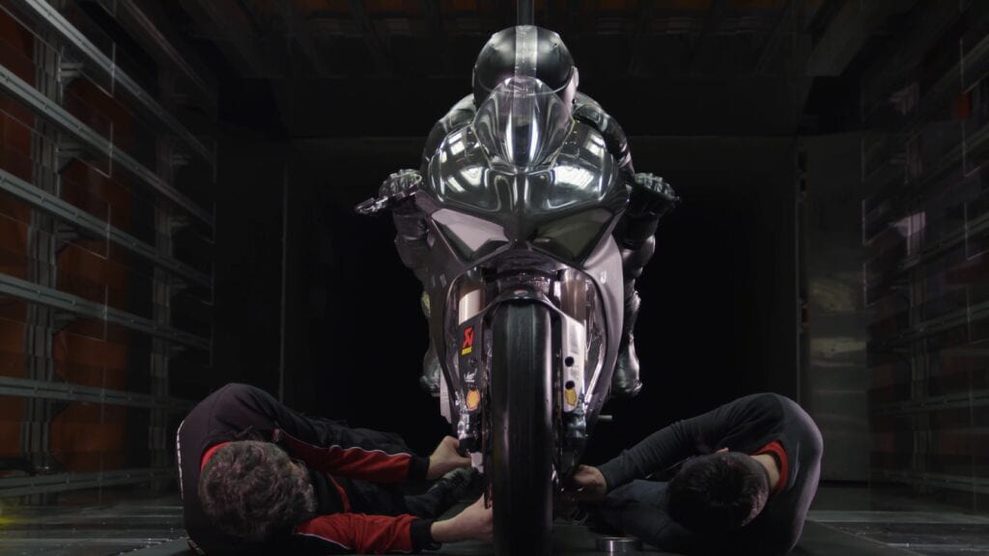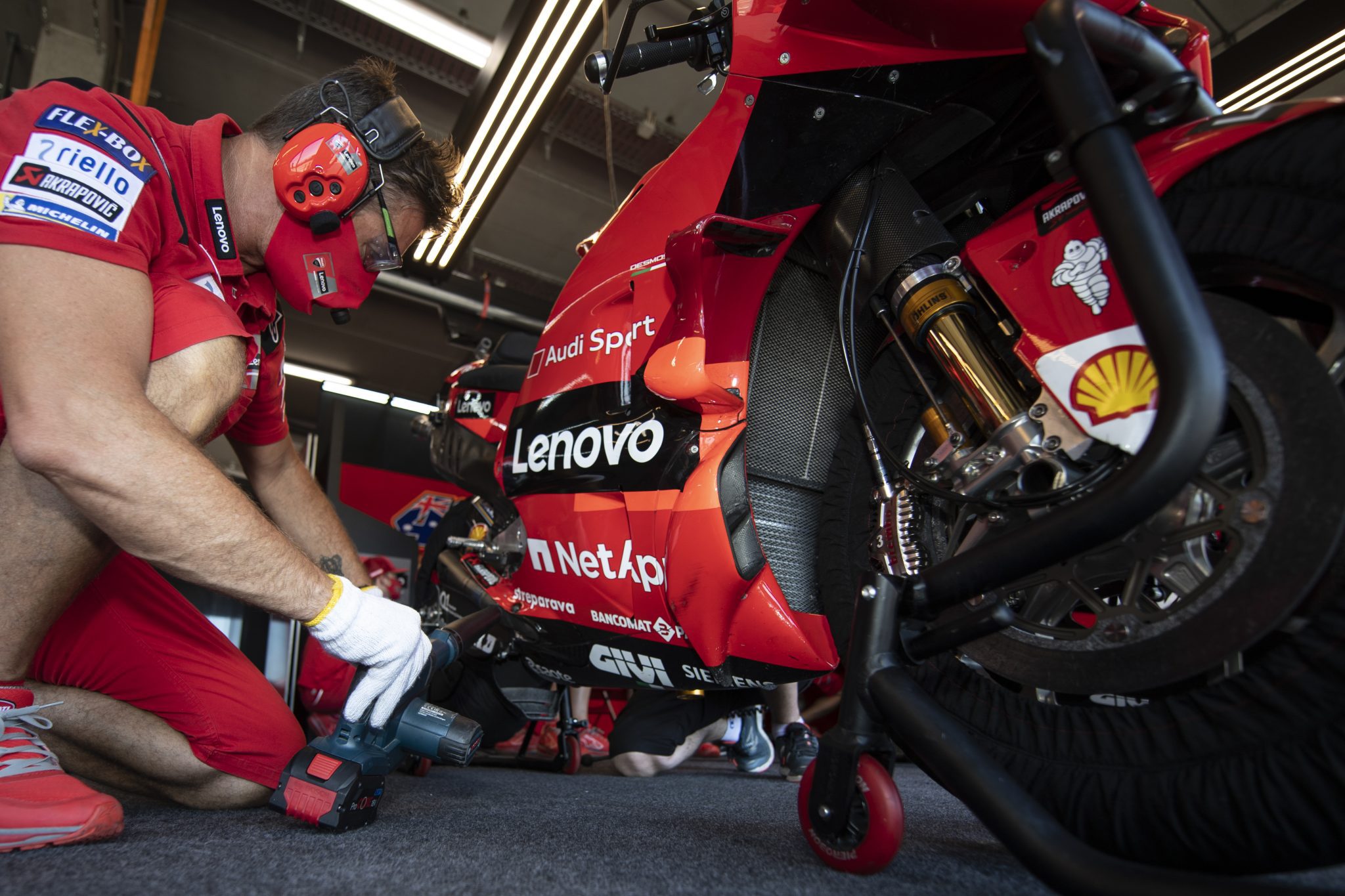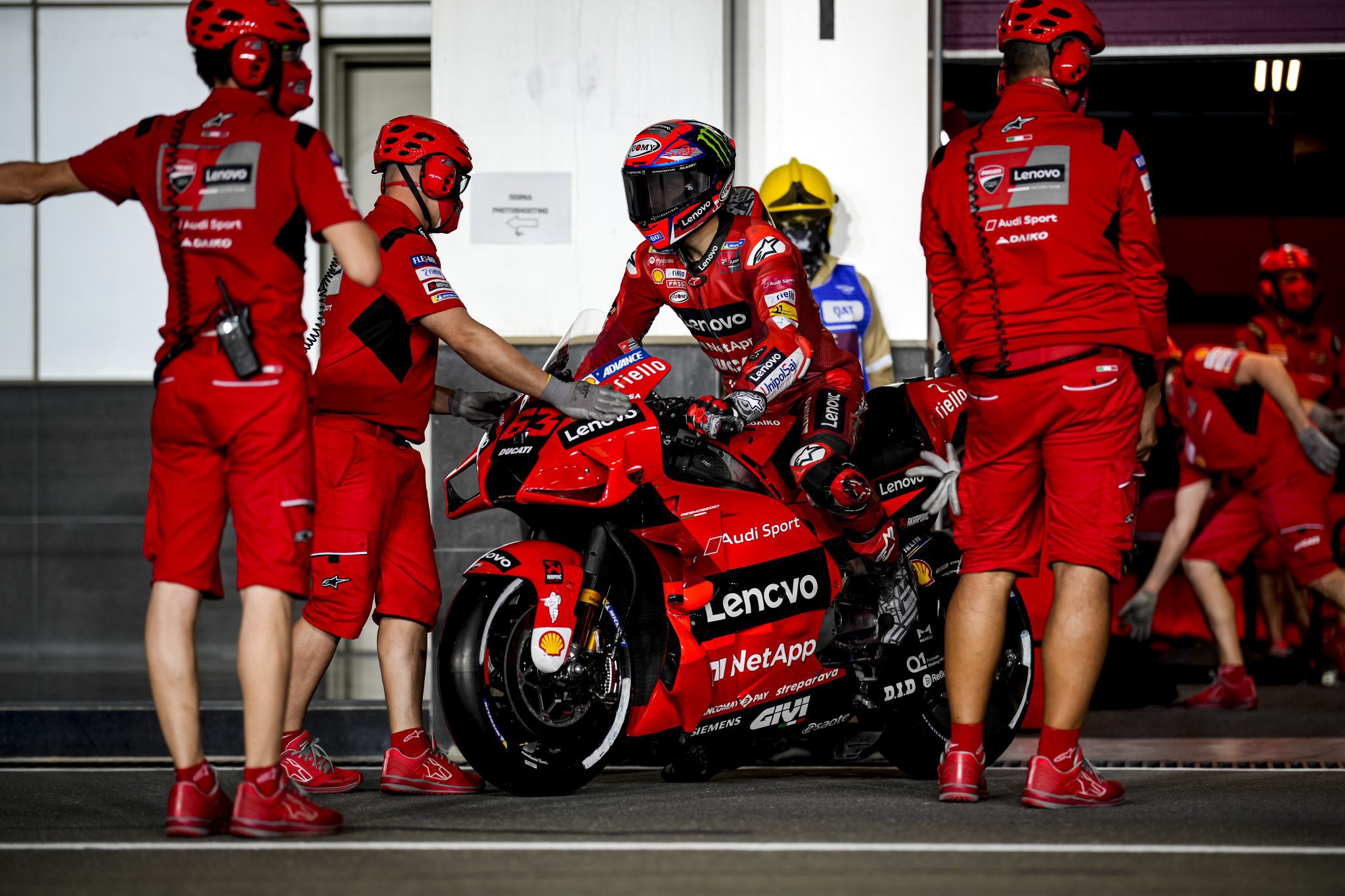There was once a time when studying the aerodynamics of a MotoGP bike meant building a test bike, putting it in a wind tunnel and flipping a switch. Anything you wanted to test, you had to build.
No longer. For Ducati, with help from technology partner Lenovo’s high performance computing resources, leaps forward in computing power have made it possible to build more and more complex models, testing possibilities without having to bring a physical product into the real world until much, much later.
“It is possible to model every part of the physics that is involved with the bike,” said Davide Barana, Technical Director, Ducati Corse.

More modeling means faster progress and less left to chance – even in the realm of the bikes’ exquisitely complex engine dynamics. In racing seasons past, modeling something like the fluid dynamics of an internal combustion engine would not have been on the menu.
That’s changed thanks to gains in processing power plus the ability to monitor different physical properties of the motorcycles with a vast array of sensors. To help Ducati make the most of these gains, Lenovo custom-designed a High Performance Computing cluster based on ThinkSystem SD530, SR630 and SR650 servers, opening the door for Ducati to model even the most complex scenarios – fast.
“In the end, the simulation is very, very close to the reality, so you just have to check the end result with the real, actual parts,” explained Barana.
Big data tools and support from Lenovo help wrangle the massive data output from the bikes’ many sensors and monitors. ThinkPad P1 workstations pull the data directly from the bikes, yielding insights quickly when time is of the essence.

“The P1s are extremely powerful available machine that are very important for our trackwork. We have a great advantage from these machines,” said Gabriele Conti, Electronic Systems Manager, Ducati Corse.
When standard modeling approaches fail, there’s another potent tool in the arsenal, ready to step in: Machine learning. This powerful technology gets a boost from Lenovo edge servers with the flexibility to perform and predict in a range of contexts.
Take tires, for example. They may not look like a complex part, but appearances can be deceiving. A composite component, they’re made of rubber and synthetic materials combined in an intricate structure whose behavior isn’t easily captured by models.
In fact, predicting the behavior of tires is critical for victory. If a rider burns through their tire allowance too early during a race, disaster ensues.
“It is very difficult, with standard modeling approach, to have a good representative of the behavior of the tires. And this is a very good example of where we can benefit from a machine learning approach in order to characterize our tire and to manage the tires during the race,” said Barana.
Machine learning also cuts out drudgery that was previously difficult and time consuming to automate. Randomization algorithms can check different configurations of parts to see which ones function the best, freeing up Ducati’s engineers to focus on higher-level innovation. Some of these innovations find their way to the company’s road bikes, too.

By simulating bike configurations with algorithms like these, run on ThinkPad laptops, Ducati engineers have upped efficiency by 25 percent and cut decision making time by more than a third – no small feat in a world where every second truly counts.
“These numbers come from the fact that we are engineers – we love numbers, we love to measure something. We don’t just like a feeling,” said Conti. “It’s something we are happy to measure, so we can see for the future – will we improve again?”
And with greater efficiency comes more time to spend thinking up the next big idea that could change the sport of racing.
“Once you are free from this trial-and-error testing, you have more time to think of a very new idea, the next idea,” said Barana.
